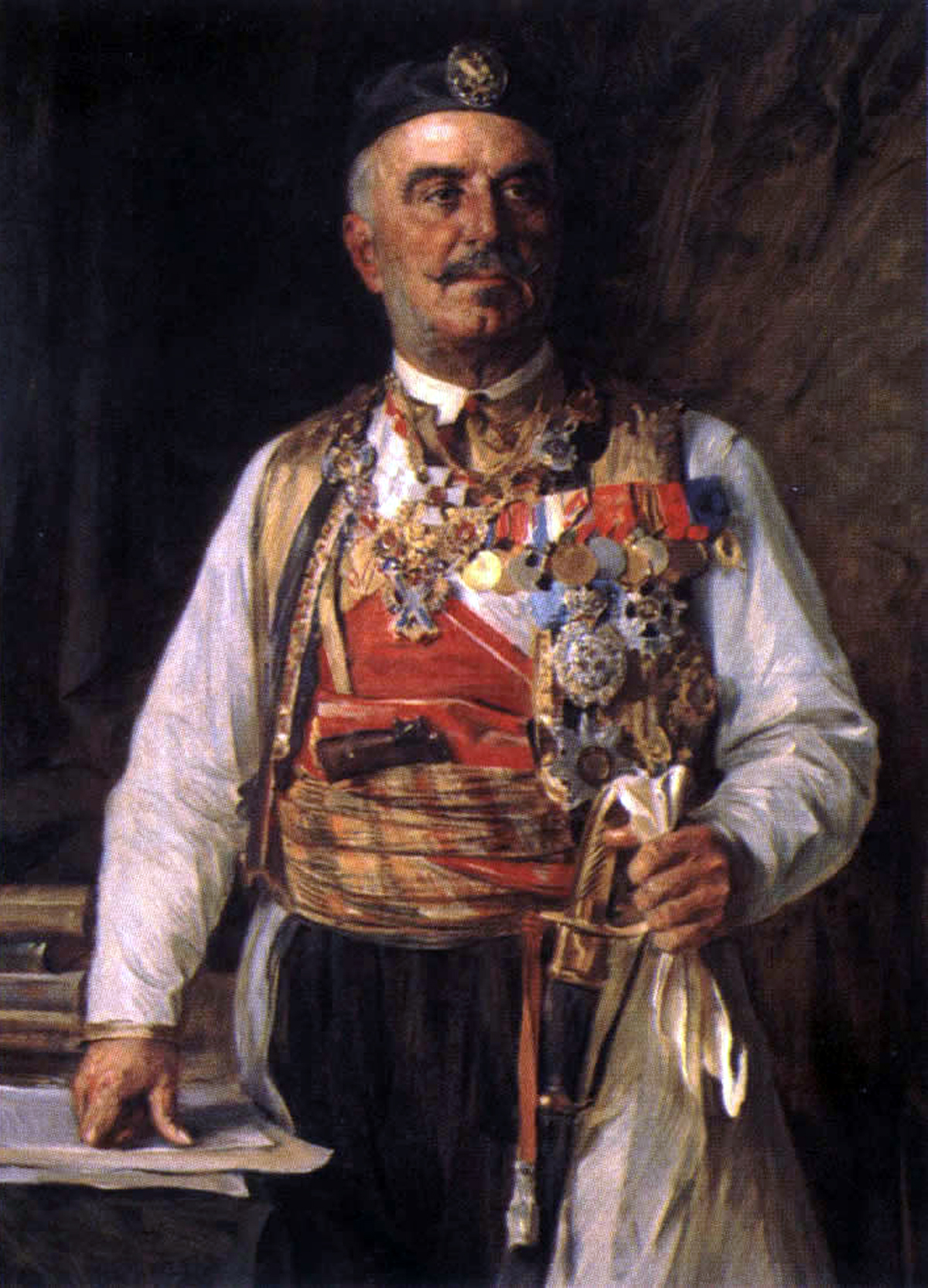SERVIA,
YOUNGEST MEMBER OF THE EUROPEAN FAMILY:
OR, A
RESIDENCE IN BELGRADE,
AND
TRAVELS IN THE HIGHLANDS AND WOODLANDS OF THE INTERIOR,
DURING THE YEARS 1843 AND 1844.
BY
ANDREW ARCHIBALD PATON, ESQ.
CHAPTER XXII.
Visit to Ravanitza.—Jovial party.—Servian and Austrian jurisdiction.—Convent described.—Eagles reversed.—Bulgarian festivities.
The Natchalnik having got up a party, we proceeded in light cars of the country to Ravanitza, a convent two or three hours off in the mountains to the eastward. The country was gently undulating, cultivated, and mostly inclosed, the roads not bad, and the ensemble such as English landscapes were represented to be half a century ago. When we approached Ravanitza we were again lost in the forest. Ascending by the side of a mountain-rill, the woods opened, and the convent rose in an amphitheatre at the foot of an abrupt rocky mountain; a pleasing spot, but wanting the grandeur and beauty of the sites on the Bosniac frontier.

Ravanitza.
The superior was a tall, polite, middle-aged man. “I expected you long ago,” said he; “the Archbishop advised me of your arrival: but we thought something might have happened, or that you had missed us.”
“I prolonged my tour,” said I, “beyond the limits of my original project. The circumstance of this convent having been the burial-place of Knes Lasar, was a sufficient motive for my on no account missing a sight of it.”
The superior now led us into the refectory, where a long table had been laid out for dinner, for with the number of Tiuprians, as well as the monks of this convent, and some from the neighbouring convent of Manasia, we mustered a very numerous and very gay party. The wine was excellent; and I could not help thinking with the jovial Abbot of Quimper:
“Quand nos joyeux verres
Se font dès le matin,
Tout le jour, mes frères,
Devient un festin.”
By dint of interlarding my discourse with sundry apophthegms of Bacon, and stale paradoxes of Rochefoucaud, I passed current throughout Servia considerably above my real value; so after the usual toasts due to the powers that be, the superior proposed my health in a very long harangue. Before I had time to reply, the party broke into the beautiful hymn for longevity, which I had heard pealing in the cathedral of Belgrade for the return of Wucics and Petronievitch. I assured them that I was unworthy of such an honour, but could not help remarking that this hymn “for many years” immediately after the drinking of a health, was one of the most striking and beautiful customs I had noticed in Servia.
A very curious discussion arose after dinner, relative to the different footing of Servians in Austria, and Austrians in Servia. The former when in Austria, are under the Austrian law; the latter in Servia, under the jurisdiction of their own consul. Being appealed to, I explained that in former times the Ottoman Sultans easily permitted consular jurisdiction in Turkey, without stipulating corresponding privileges for their own subjects; for Christendom, and particularly Austria, was considered Dar El Harb, or perpetually the seat of war, in which it was illegal for subjects of the Sultan to reside.
In the afternoon we made a survey of the convent and church, which were built by Knes Lasar, and surrounded by a wall and seven towers.a
The church, like all the other edifices of this description, is Byzantine; but being built of stone, wants the refinement which shone in the sculptures and marbles of Studenitza. I remarked, however, that the cupolas were admirably proportioned and most harmoniously disposed. Before entering I looked above the door, and perceived that the double eagles carved there are reversed. Instead of having body to body, and wings and beaks pointed outwards, as in the arms of Austria and Russia, the bodies are separated, and beak looks inward to beak.
On entering we were shown the different vessels, one of which is a splendid cup, presented by Peter the Great, and several of the same description from the empress Catharine, some in gold, silver, and steel; others in gold, silver, and bronze.
The body of Knes Lasar, after having been for some time hid, was buried here in 1394, remained till 1684, at which period it was taken over to Virdnik in Syrmium, where it remains to this day.
In the cool of the evening the superior took me to a spring of clear delicious water, gushing from rocks environed with trees. A boy with a large crystal goblet, dashed it into the clear lymph, and presented it to me. The superior fell into eulogy of his favourite Valclusa, and I drank not only this but several glasses, with circumstantial criticisms on its excellence; so that the superior seemed delighted at my having rendered such ample justice to the water he so loudly praised, Entre nous,—the excellence of his wine, and the toasts that we had drunk to the health of innumerable loyal and virtuous individuals, rendered me a greater amateur of water-bibbing than usual.
After some time we returned, and saw a lamb roasting for supper in the open air; a hole being dug in the earth, chopped vine-twigs are burnt below it, the crimson glow of which soon roasts the lamb, and imparts a particular fragrance to the flesh. After supper we went out in the mild dark evening to a mount, where a bonfire blazed and glared on the high square tower of the convent, and cushions were laid for chibouques and coffee. The not unpleasing drone of bagpipes resounded through the woods, and a number of Bulgarians executed their national dance in a circle, taking hold of each other’s girdle, and keeping time with the greatest exactness.



